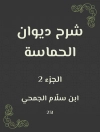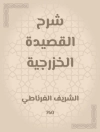Layamon’s Brut is a seminal work of Middle English literature, composed in the early 13th century. This epic poem recounts the legendary history of Britain from its mythical origins under Brutus, a descendant of Aeneas, through the Arthurian tales and the establishment of British kingdoms. Written in an unrhymed alliterative verse, Layamon’s style reflects the oral traditions of storytelling while also showcasing the poet’s ability to weave complex narratives and characterizations. The poem stands as a bridge between the Old English epic tradition and the emerging Middle English literary culture, providing rich insights into the social and historical contexts of medieval Britain. Layamon, a priest from Worcestershire, was deeply influenced by both the Anglo-Saxon heritage and the burgeoning romance tradition of the time. His unique blend of these influences demonstrates a commitment to preserving native legends while simultaneously embracing the stylistic advancements of the continental literary landscape. This confluence of cultural narratives likely fueled his ambition to create a comprehensive chronicle of Britain’s past, showcasing both the grandeur and the moral lessons encapsulated in its history. For readers interested in medieval literature, Layamon’s Brut offers a captivating exploration of heroic ideals, national identity, and the power of storytelling. This foundational text is not only vital for understanding the evolution of English literature but also serves as a profound commentary on the societal values and historical consciousness of its era.
Yazar hakkında
Layamon, a notable figure in early English literature, was a priest and poet active at the turn of the 13th century, whose work crucially bridges the gap between Old English and Middle English literary traditions. Virtually all that is known of Layamon’s life comes from his seminal work, ‘Layamon’s Brut, ‘ also known as ‘The Chronicle of Britain.’ This significant poem, written in a transitional form of English that mingles Old English and early Middle English features, retells the legendary history of Britain, stitching folklore, history, and myth. ‘Layamon’s Brut, ‘ composed in over 16, 000 lines of alliterative verse sometime between 1190 and 1225, draws extensively from Wace’s ‘Roman de Brut, ‘ a work itself heavily influenced by Geoffrey of Monmouth’s ‘Historia Regum Britanniae.’ Layamon expands on Wace’s text with additional detail and episodes from Celtic folklore, demonstrating his innovative narrative techniques and his distinctive literary style characterized by a strong sense of rhythm and a rich use of language and imagery. His ambitious attempt to reassert native folklore and his blend of vernacular language are marked as pivotal in the development of English literature. Notwithstanding the obscurity that shadows his life, Layamon’s contributions resonate deeply in the historical tapestry of narrative and poetic tradition in England (Allen, 1892; Barron 1992; Matthews, 1991).












